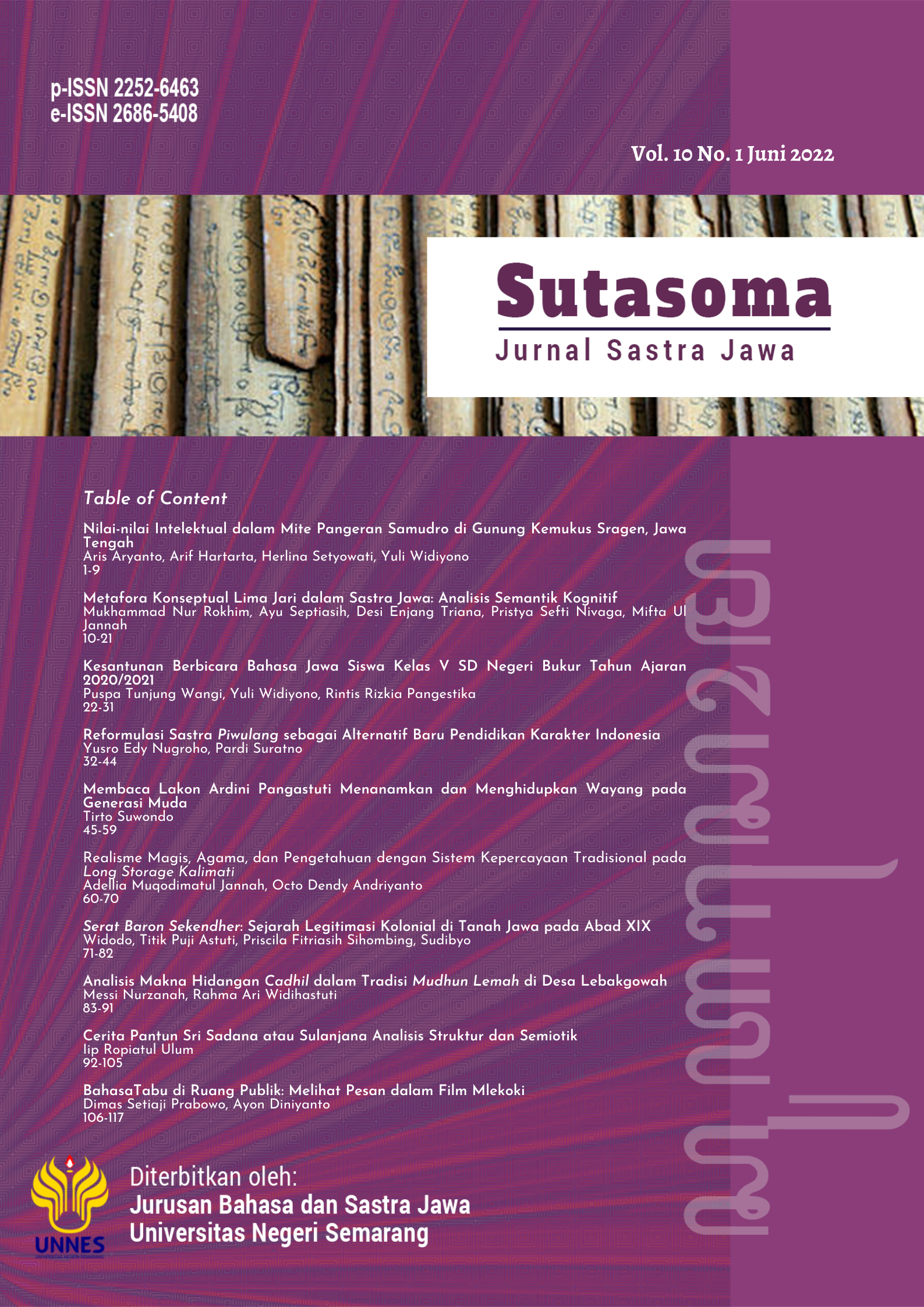Serat Baron Sakendher: Sejarah Legitimasi Kolonial di Tanah Jawa pada Abad XIX
##plugins.themes.academic_pro.article.main##
Abstract
Serat Baron Sakendher (SBS) is one of the classic Javanese works that narrates the relationship between the Javanese and the Belanda. The SBS script was written in the post-Java war of 1830, when the south-central part of Java was politically completely controlled by the Belanda. The kings and aristocrats in the four Javanese palaces were very submissive to the authority of the VOC as well as being an extension of the power to suppress and explore the population. SBS became the legitimacy of the Javanese king's power over his people as well as the history of the presence of white people. SBS was written by Ngabei Yudasara and later developed by Carik Sasanapustaka. In four Javanese courts, the SBS script was rewritten by different authors during the reign of the same king and duke. Until now, through catalog searches, 21 SBS scripts were found with different panedhak and in different years. It is narrated that at first the presence of Baron Sakendher (BS) to Java was to trade and expand the territory. But when he arrived in the Mataram area, he lost to Panembahan Senopati, the first Mataram King. Finally, BS and his brother made up their mind to serve the Javanese rulers by changing their form into subtle creatures who served and protected the King of Mataram. This narrative reverses with the orientalism narrative which is echoed by the west against the east. West as the ocean and east as the other. Javanese poets view the presence of westerners on the contrary from the discourse of orientalism. West was seen by Javanese poets as someone who came to serve the Javanese rulers.
##plugins.themes.academic_pro.article.details##
Untuk dapat diterima dan diterbitkan oleh Sutasoma : Jurnal Sastra Jawa, penulis yang mengirimkan naskah artikel harus menyelesaikan semua tahapan review. Dengan mengirimkan naskah, penulis menyetujui persyaratan berikut:
- Hak cipta atas artikel yang diterima diserahkan kepada Sutasoma : Jurnal Sastra Jawa selaku penerbit jurnal. Hak cipta yang dimaksud meliputi hak untuk menerbitkan artikel dalam berbagai bentuk (termasuk cetak ulang). Sutasoma : Jurnal Sastra Jawa mempertahankan hak publish atas artikel yang diterbitkan.
- Penulis diperbolehkan menyebarluaskan artikel yang telah diterbitkan dengan membagikan link/DOI artikel di Sutasoma : Jurnal Sastra Jawa]. penulis diperbolehkan untuk menggunakan artikel mereka untuk tujuan hukum yang dianggap perlu tanpa izin tertulis dari Sutasoma : Jurnal Sastra Jawa dengan pengakuan publikasi awal jurnal ini.
- Pengguna/penggunaan publik dari situs web ini akan dilisensikan ke CC BY-NC-SA (Attribution & Non-Commercial-ShareAlike).
